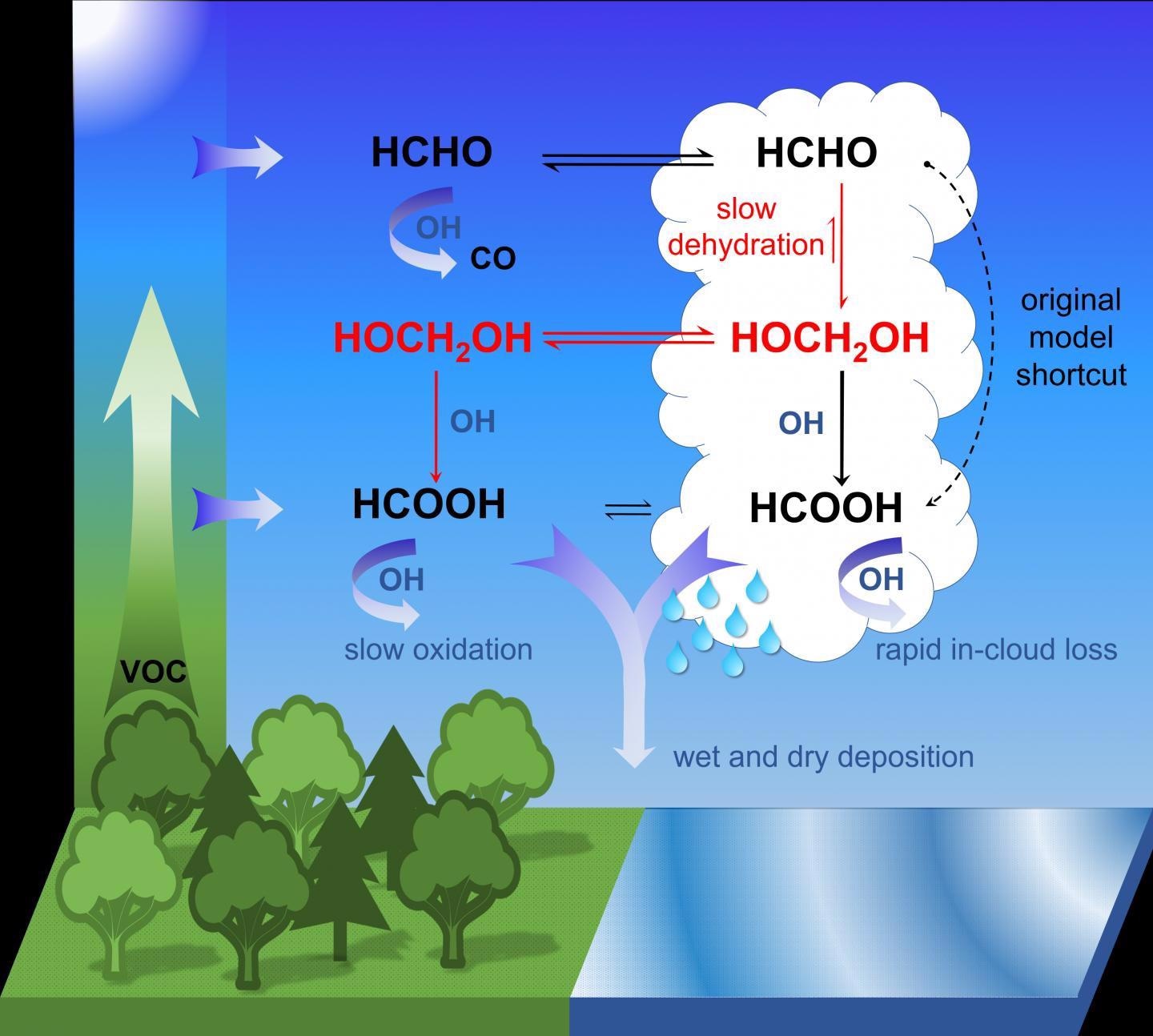May 13 2021
Atmospheric acidity is increasingly established by organic acids, like formic acid, and carbon dioxide. The former contributes to the development of aerosol particles as a precursor of raindrops and thus affects the pH of rainwater and the growth of clouds.
 Schematic of major emission sectors and primary emissions, meteorological and chemical processes, impacts to air quality and climate, and measurement and analysis tools used to analyze the effects of emissions changes. Image Credit: B. Franco et al, Ubiquitous atmospheric production of organic acids mediated by cloud droplets, Nature, May 2021.
Schematic of major emission sectors and primary emissions, meteorological and chemical processes, impacts to air quality and climate, and measurement and analysis tools used to analyze the effects of emissions changes. Image Credit: B. Franco et al, Ubiquitous atmospheric production of organic acids mediated by cloud droplets, Nature, May 2021.
In earlier atmospheric chemistry models of acid formation, formic acid had played an insignificant role. The chemical processes involved in its formation were not fully understood.
Under the aegis of Forschungszentrum Jülich, an international research team has now succeeded in bridging this gap and decoding the dominant mechanism in the development of formic acid. This makes it feasible to further improve the atmosphere and climate models. The study results have recently been reported in the peer-reviewed journal Nature.
People in Germany are familiar with acid rain, specifically from their experience in the 1980s. The reason for this acid rain was that sulfur oxides and nitrogen oxides discharged into the air by humans form nitric acid and sulfuric acid by reacting with the water droplets in the clouds. The pH of acid rain is around 4.2 to 4.8, which is lower than pure rainwater which has a pH of 5.5 to 5.7. Normal acidity occurs due to the natural carbon dioxide content of the air.
But the chemical process that develops into the bulk of the formic acid found in the air was not known, until now. Dr Bruno Franco and Dr Domenico Taraborrelli from Jülich’s Institute of Energy and Climate Research—Troposphere have now successfully decoded it: Formaldehyde is naturally formed by the photo-oxidation of volatile organic compounds.
Methanediol is formed when formaldehyde reacts in cloud droplets with water molecules. Most of this methanediol is released and it subsequently reacts with OH radicals, at times known as the “detergent of the atmosphere,” to form formic acid through a photochemical process. A smaller part also forms formic acid by reacting with the liquid phase of the water droplets and this acid is scattered by rain.
According to our calculations, the oxidation of methanediol in the gas phase produces up to four times as much formic acid as what is produced in other known chemical processes in the atmosphere.
Domenico Taraborrelli, Institute of Energy and Climate Research, Forschungszentrum Jülich
This quantity decreases the pH of rainwater and clouds by up to 0.3, which underscores the contribution of organic carbon to the natural acidity present in the air.
Initially, the two researchers tested their concept using MESSy—a global atmospheric chemistry model—and compared the findings with remote sensing data. To perform the modeling, the team utilized the Jülich supercomputer JURECA. The results were confirmed through subsequent experiments performed in Jülich’s SAPHIR atmosphere simulation chamber.
We assume that the mechanism demonstrated is also active in aqueous aerosols and applies to other organic acids such as oxalic acid, which are not adequately accounted for in atmospheric chemistry models to date.
Domenico Taraborrelli, Institute of Energy and Climate Research, Forschungszentrum Jülich
One of the impacts of this could be better insight into the growth of aerosol particles and the formation of clouds.
Journal Reference:
Franco, B., et al. (2021) Ubiquitous atmospheric production of organic acids mediated by cloud droplets. Nature. doi.org/10.1038/s41586-021-03462-x.